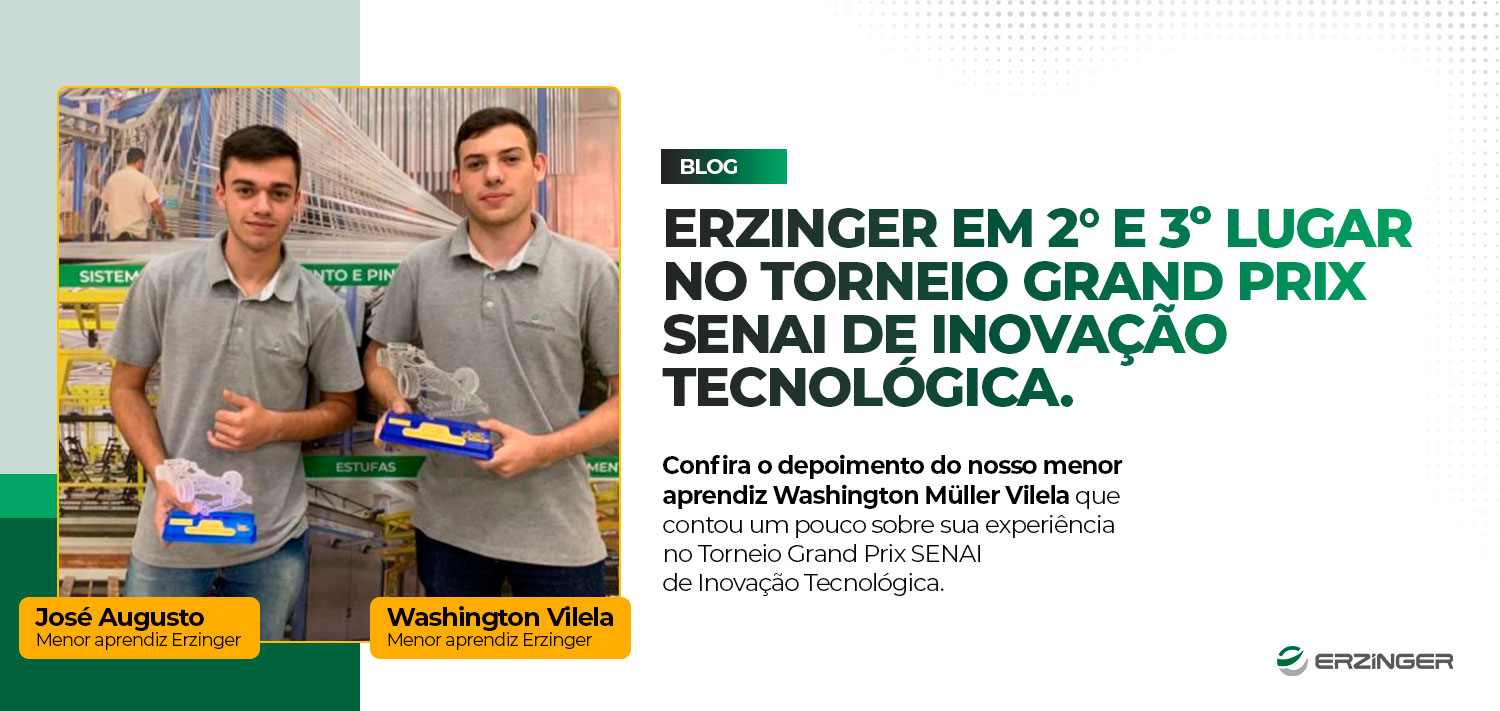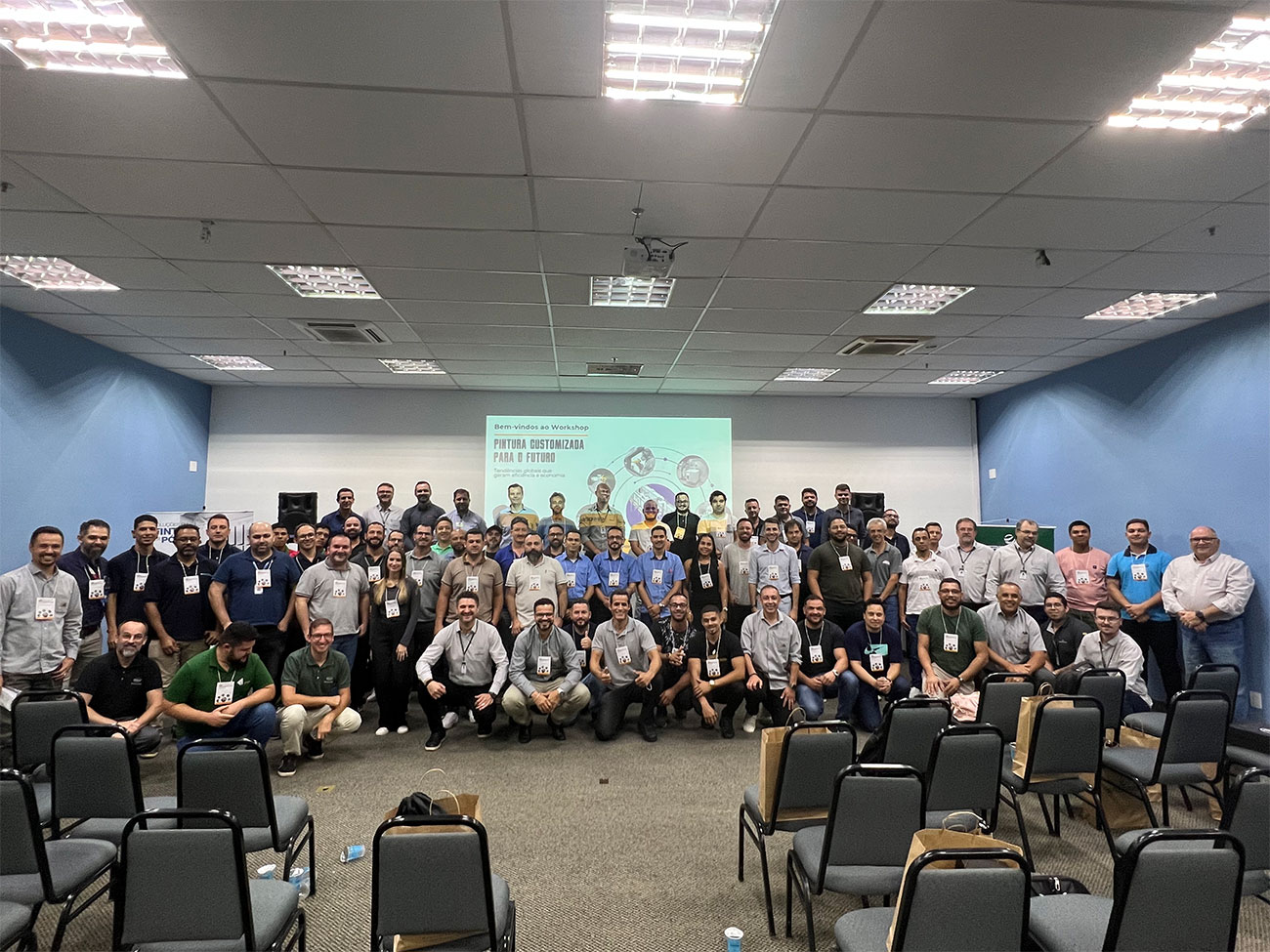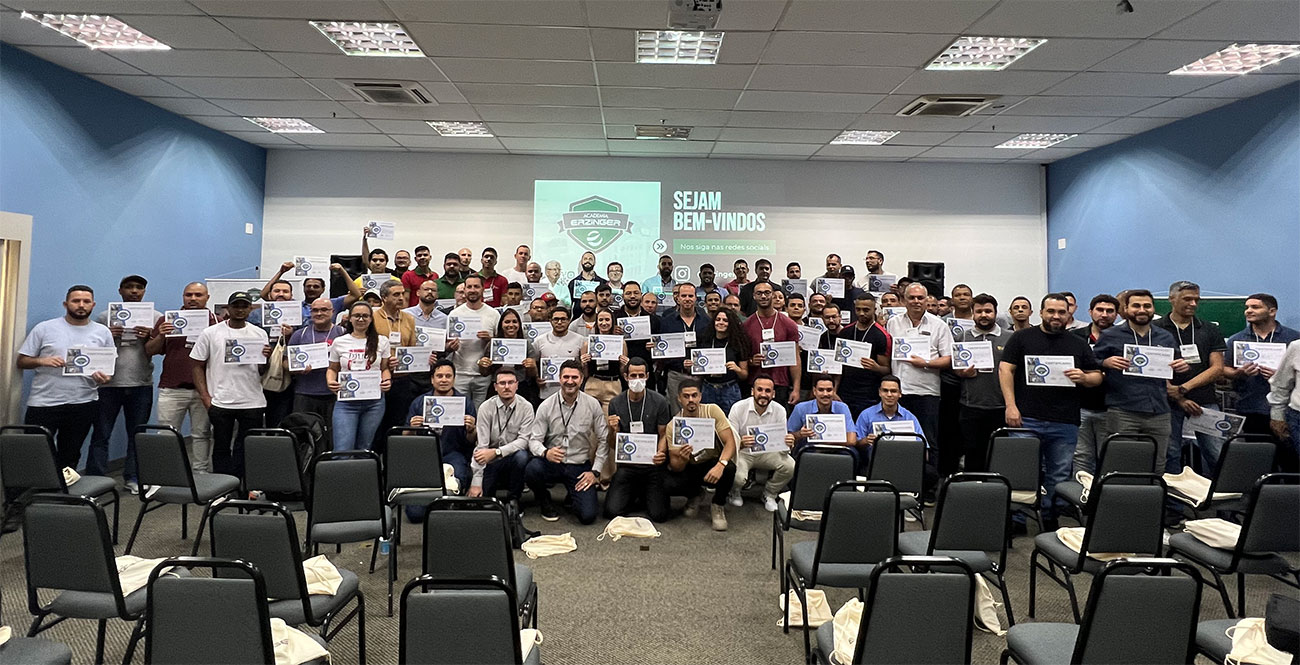Check out the testimony of our underage apprentice Washington Müller Vilela, who won one of the prizes at the SENAI Grand Prix of Technological Innovation tournament. On that occasion, José Augusto also developed a champion project and won another podium.
How did it all happen?
“On August 9 and 10, I took part in and won 2nd place in the SENAI Grand Prix Tournament, which consists of an innovation race in which a real industry presents a real problem and we competitors have to come up with an innovative and applicable solution based on the established criteria.
SENAI made a selection from among its 1,500 or so students in apprenticeship situations, selecting and inviting the 50 best, which already expresses great satisfaction, but today, I’m going to tell you the details about the project that took me (along with my team) to the podium, in second place (it was extremely close and we almost won first place!).
Just to put it in context, the industry was AB Past, and it proposed that we create an innovative toy with some recyclable polymer in the plastic injection process.
The teams were drawn and mine was the Red Squad (Washington, Gabriel Ziemer, Gabriel Xavier, Maria Eduarda and Gabriela), who by the way I didn’t know!

Math-Stack – The Math Block Skill Game!
Are you ready for a gaming experience that challenges not only your physical ability, but also your mathematical dexterity? Introducing Math-Stack, an exciting twist on the classic JENGA, where each block contains a mathematical operation and a color, as well as a numeric and colored die that decides the options of pieces that can be moved without the player allowing the tower to collapse.
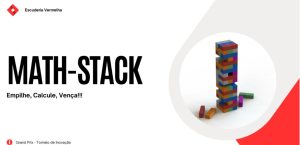
Innovative Resources:
1. Math Blocks:
The game consists of 54 parallelepiped-shaped mathematical blocks, each of which contains on its two smaller sides a simple mathematical operation, such as subtraction and addition (expressed by the + and – signs), with 6 possible results, these being numbers from 1 to 6. Each result has 3 combinations of operations [ e.g. Result 6 = (10-4); (3+3); (4+2)] with 3 pieces having the same combination, resulting in 9 pieces with each possible result.
This promotes a practical approach to mathematics and encourages players to think strategically and quickly.
In addition, as this is a philanthropic project that will be donated to institutions that support underprivileged children, for inclusion purposes, the pieces have 6 color options with 9 pieces of each color, however, the colors are not congruent with the result or combination of operations, becoming separate classification groups of pieces (for example: operations that result in 1; 2; 3; 4; 5 and 6 can have the same color), making it possible to play Math-Stack by solving operations, by searching for colors or mixed, being able to work both ways at the same time being fair to both players.
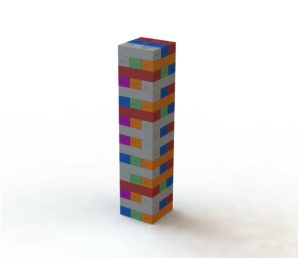
2. Strategic Data:
Math-Stack has a colored number dice, each side of which has a numeral from 1 to 6 and a vibrant color. It can be used in three ways: operation solving, color search or mixed.
In operation resolution mode, the player in turn rolls a die that gives a result from 1 to 6, ignoring the color information. After this, the player must observe the tower and look for pieces whose result is the number drawn by the die, so that they can remove them from their original location and reposition a piece with this result on top of the tower without knocking it over.
In the color search mode, the methodology is similar, however, the player rolls the die that results in a color (the player must ignore the numerical digit), then observes pieces of the same color drawn on the die in the tower, being able to remove one of them from its original position and reposition it on top of the tower without allowing the tower to collapse.
In the mixed mode, each player will play according to their modality, i.e. players who are proficient in mathematics will play in the operation solving mode and those who are not or who have some special need will play in the color search mode.
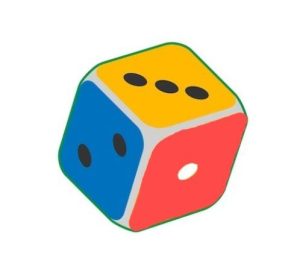
3. Modes of Difficulty:
Math-Stack is suitable for ages 6 and up, but it can be adapted for other age groups, including new operations and mathematical concepts that make it more difficult.
This ensures that players of all ages and skill levels can have fun and learn.
4. Team challenges:
Math-Stack promotes cooperation and teamwork. You can play individually or form teams to solve mathematical challenges together.
Benefits:
1 – Fun learning:
Math-Stack makes math accessible and fun. Players develop problem-solving and mental calculation skills while having fun.
2- Improvements in physical and mental abilities:
Combining fine motor skills with quick thinking improves mental agility and concentration, even more so in the child and adolescent development age group
3-Interaction and social inclusion:
Math-Stack is a great way to bring friends and family together for an educational and engaging game experience.
Due to its 3 game modes, it can reach players of different characteristics, social groups and education levels, allowing many children in vulnerable situations to have their first contact with mathematics and/or develop their basic skills, as well as promoting social interaction and resourcefulness for children with autism and other special needs.
Market and Opportunity:
Playful education and the search for fun alternatives to learning continue to be relevant trends.
MathStack takes advantage of this opportunity, offering an innovative way to practice math skills in an engaging and interactive way.
Technical aspects of manufacturing and design:
In order to meet the requirements for manufacturing using the plastic injection process and to reduce implementation and application costs as much as possible due to the project’s philanthropic nature, we tried to develop something with a simple geometry, guaranteeing lower costs in terms of raw materials, rework, production costs, energy and production and mold costs.
Math-Stack seeks to promote a better world for children, and with this in mind, its parts will be made from the waste and surplus of the company that created them (AB Plast), generating a new cycle for those polymers that would otherwise be discarded.
With pieces made of PP (Polypropylene) measuring 15x20x60mm and 1.5mm thick (with one of its larger sides hollowed out to facilitate the injection process), the complete set of 54 pieces would cost around R$7.65 (including the cost of raw materials, manufacturing, labor, energy and screen printing).
Due to the part’s simple geometry, the mold was designed as follows: A 200x200mm mold that can contain 4-8 cavities depending on the company’s production expectations, with the mold costing around R$45,000.
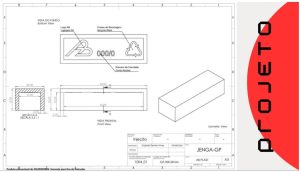
All this culminates in a highly scalable project, with relatively low implementation and production costs, great social benefits and satisfactory results.
As far as manufacturing the dice is concerned, we don’t think it would be feasible to add a cavity for the dice in the mold for the parts, as we would have a huge surplus, but it would also be extremely expensive to create a mold for just dice. We therefore suggest a partnership with SENAI.
Every year, SENAI creates molds with its manufacturing, plastics technician, mechanical design and other classes, so our idea is that SENAI will be involved in the manufacturing of the mold and injection of the data and will participate in the delivery together with AB Plast, combining the useful with the pleasant, generating content and learning in the manufacture of the data and reducing costs so that the project becomes viable.
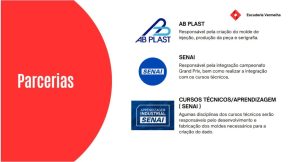
Conclusion:
If you’re ready to turn JENGA into an exciting math adventure, Math-Stack is the perfect game for you! Develop your math and strategy skills while having fun with friends and family. Combining physical fun with mathematical challenges, Math-Stack is the next revolution in board games. Get ready to stack, calculate and master the math tower!”
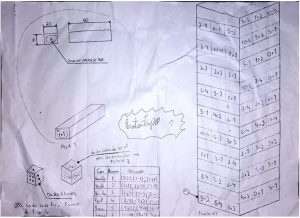
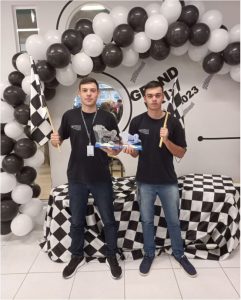
Congratulations team! May this be a great incentive for a career full of innovative projects and success! Erzinger is proud to have talents like you on its team and we thank you for the trust you place in us to develop more and more!

